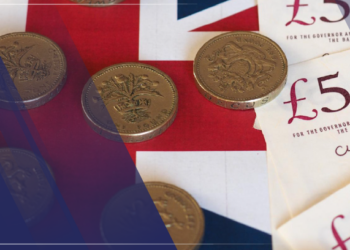United States
The Federal Reserve launched its most aggressive anti-inflationary campaign yet on Wednesday, raising benchmark interest rates by three-quarters of a percentage point, the largest hike since 1994. Ending weeks of speculation, the Federal Open Market Committee raised its benchmark funds rate to a range of 1.5 % to 1.75 %, the highest since just before the Covid pandemic began in March 2020. This raised recession fears and sent stocks lower for a second consecutive week. The S&P 500 Index recorded its worst weekly decline since March 2020 and entered a bear market, ending the week nearly 24% below its January peak.
The interest rate hikes have impacted mortgages held by borrowers, as many need to repay more compared to previous months. According to several reports, the housing sector was already feeling the effects of Fed tightening and rising mortgage rates. Building permits fell 7% in May to their lowest level since September, while housing statistics fell 14.4%, the largest drop since the pandemic began. The labour market also reported an increase in jobless claims to 229,000 from 210,000 which was a higher report than what had been expected. As recession fears are on the pick, retail data on the other hand fell to 0.3% in May. This has been attributed to a decline in the sales of discretionary goods and automakers which to some extent related to auto loans used to purchase them.
In terms of Yields, the 10-year treasure note realised higher yields on Tuesday to 3.49%, which marks its highest level in 10 years. Tax-exempt municipals posted negative returns, as widespread outflows from municipal bond funds exacerbated selling pressures. Municipals outperformed US Treasuries by a wide margin in the broad market. Due to sentiment falling, corporate bonds underperformed as there have been liquidity challenges in the last week with a volatile bond market and banking sector. Bank loans were mixed as the week began as sentiment turned increasingly bearish after investors appeared to contemplate what a continued upward move in rates will do to economic growth.
The EU/UK
Shares in Europe fell sharply on fears that economic growth would slow after several central banks raised interest rates. The pan-European STOXX Europe 600 Index ended the week 4.60% lower in local currency. Major indices also fell significantly. The DAX Index in Germany fell 4.62%, the CAC 40 Index in France fell 4.92%, and the FTSE MIB Index in Italy fell 3.36 %.
The Bank of England raised its key interest rates to 1.25% for the 5th time as the economy shrinks for the second month running. Three of the nine policymakers voted for a 50-basis-point increase as the committee emphasised that it would pay attention to the indicators that show any persistent inflationary pressures and will have to act in lieu. The BOE also revised its inflation outlook, projecting a higher outlook as the cost of living would be slightly above 11% in October accounting for higher expectations for higher household energy costs. The updated forecast also calls for an economic contraction of 0.3% in the second quarter, as opposed to the 0.1% expansion projected in the BoE’s May policy report.
To keep inflation under control, the Swiss National Bank unexpectedly raised interest rates by half a point to 0.25 %. The central bank raised its inflation forecast significantly and stated that further rate hikes could not be ruled out. The European Central Bank held an emergency monetary policy meeting on Wednesday after bond yields for many governments across the eurozone have risen in recent days. Borrowing costs for many nations have risen sharply over the past week as the gap between the Italian and German bond yields widened to its highest level since 2020. The yield on the 10-year Italian government bond also passed the 4% mark earlier this week.
The bond market moves, which highlight investor nervousness, are linked to concerns that the central bank will tighten monetary policy more aggressively than previously anticipated. At the same time, the ECB failed to provide any details about possible measures to support highly indebted eurozone nations last week, fuelling investor concerns.
japan
Japan’s stock markets fell sharply last week, with the Nikkei 225 Index falling 6.69 % and the broader TOPIX index falling 5.52 %. Fears of a recession were sparked by the United States Federal Reserve’s announcement of the steepest interest rate increase since 1994, as well as other central banks’ moves to rein in rising inflation. The Bank of Japan (BoJ) maintained its ultralow interest rates, further separating itself from global peers. In light of this, the 10-year Japanese government bond yield fell slightly to 0.24 %, from 0.25 % at the end of the previous week. The yen continued to hover around a 24-year low but strengthened modestly over the week, to around JPY 134.3 against the U.S. dollar, from the prior week’s JPY 134.4.
At its June monetary policy meeting, the BoJ kept overnight interest rates at minus 0.1% and said it would conduct daily purchases of 10-year JGBs at a yield of 0.25%. In addition to sticking to its policy of yield curve control, the BoJ reiterated its commitment to quantitative and qualitative monetary easing in the pursuit of its 2.0% price stability target for as long as it is necessary to maintain that target in a stable manner. The BoJ remained firmly in easing mode—despite rising inflation and a sliding yen continuing its monetary policy divergence from global peers.
Japan’s main policy rates all remain around zero. The Bank of Japan continues to target a negative short-term rate of minus 0.1%, and it has imposed a firm cap of 0.25% on the yield of the 10-year Japanese government bond by promising to buy unlimited quantities of those bonds. However, these low rates encourage borrowing but have their own risks in particular the weak yen, which means Japan needs to pay more for imported food and energy in contrast to higher profits for Japanese exports.
China
Chinese stock markets rose on expectations that an increase in fixed asset investments would help the country’s economy recover. According to Reuters, the broad, capitalisation-weighted Shanghai Composite Index rose 1.0%, while the blue-chip CSI 300 Index, which tracks the largest listed companies in Shanghai and Shenzhen, rose 1.4% to its highest level in three months.
Industrial production rose mildly in May from a year ago as opposed to the expected drop forecasted by analysts at Reuters. Retail sales contracted less than expected due to the less tightening of covid restrictions in Shanghai as production gradually resumed.
The Chinese Yuan remained broadly flat against the US dollar, ending at 6.70 per dollar, up from 6.69 last week. The 10-year Chinese government bond yield increased to 2.83% from 2.81% a week ago after the US Federal Reserve raised interest rates and signalled more policy tightening in the coming months. These expectations were reflected in another month of large outflows from onshore bond markets in May, totalling USD 16 billion the fourth month of sales in a row bringing the total drawdowns since February to USD 61 billion.
China’s holdings of US Treasuries fell to their lowest level since May 2010 in April, as Treasury prices fell during the month in anticipation of the Fed tightening. After Japan, China is the second-largest non-US holder of Treasuries. China’s labour market also showed signs of weakness as the unemployment rate in 31 major cities rose to a record high of 6.9%, while the youth jobless rate rose to a record 18.4%, Bloomberg reported, citing official statistics.
|
|
Weekly Index |
YTD Index |
||
|
Index |
Local Currency |
Sterling Pound |
Local Currency |
Sterling Pound |
|
UK |
|
|
|
|
|
FTSE 100 Index |
-3.68% |
-3.68% |
-2.73% |
-2.73% |
|
US |
|
|
|
|
|
S&P 500 Index |
-5.76% |
-4.51% |
-22.50% |
-13.82% |
|
EU |
|
|
|
|
|
Euro Stoxx 50 |
-1.86% |
-0.77% |
-16.15% |
-13.82% |
|
Asia |
|
|
|
|
|
Nikkei 225 Index |
-6.69% |
-6.19% |
-9.25% |
-14.96% |
|
Hang Seng Index |
-3.28% |
-2.01% |
-8.64% |
-9.93% |
|
MSCI Emerging Markets Index |
-3.80% |
-3.82% |
-13.81% |
-8.78% |
More news
-
Markets last week – 19/04/2024
USA Stocks continued their retreat from recent highs as geopolitical tensions and concerns about interest rates weighed on investor sentiment. Mega-cap technology shares faced pressure due to rising rates, exacerbated by a revenue miss from ASML Holdings. Small-cap stocks struggled, pushing the Russell 2000 Index further into negative territory. The trading week began with optimism
April 22, 2024 Read more -
Markets last week – 12/04/2024
USA Equity markets retreated amid fears of Middle East conflict and persistent inflation pressures, pushing Treasury yields higher. Large-caps fared better than small-caps, with growth stocks outperforming value shares which were weighed down by interest rate-sensitive sectors, such as real estate investment trusts (REITs), regional banks, housing, and utilities. Wednesday’s CPI data showed prices rising
April 17, 2024 Read more -
Markets last week – 05/04/2024
USA In the U.S., stocks retreated from record highs as U.S. Treasury yields surged, driven by indications of a manufacturing revival. Major indexes, particularly large-cap ones, pulled back, with growth stocks outperforming their value counterparts. Energy stocks notably surged, fueled by rising tensions between Israel and Iran and concerns over oil supply disruptions. Additionally, Microsoft’s
April 10, 2024 Read more -
UK Tax rates 24/25
UK TAX RATES 24/25 The tax year starts today, the 6th of April and will end on April 5th of next year. It’s important to note that tax rates, limits, and allowances can change from year to year, affecting the amount people pay in taxes. To help you prepare, here’s a convenient overview of the
April 6, 2024 Read more
About Author
How can we help you?
If you would like to speak to one of our advisers, please get in touch today.


